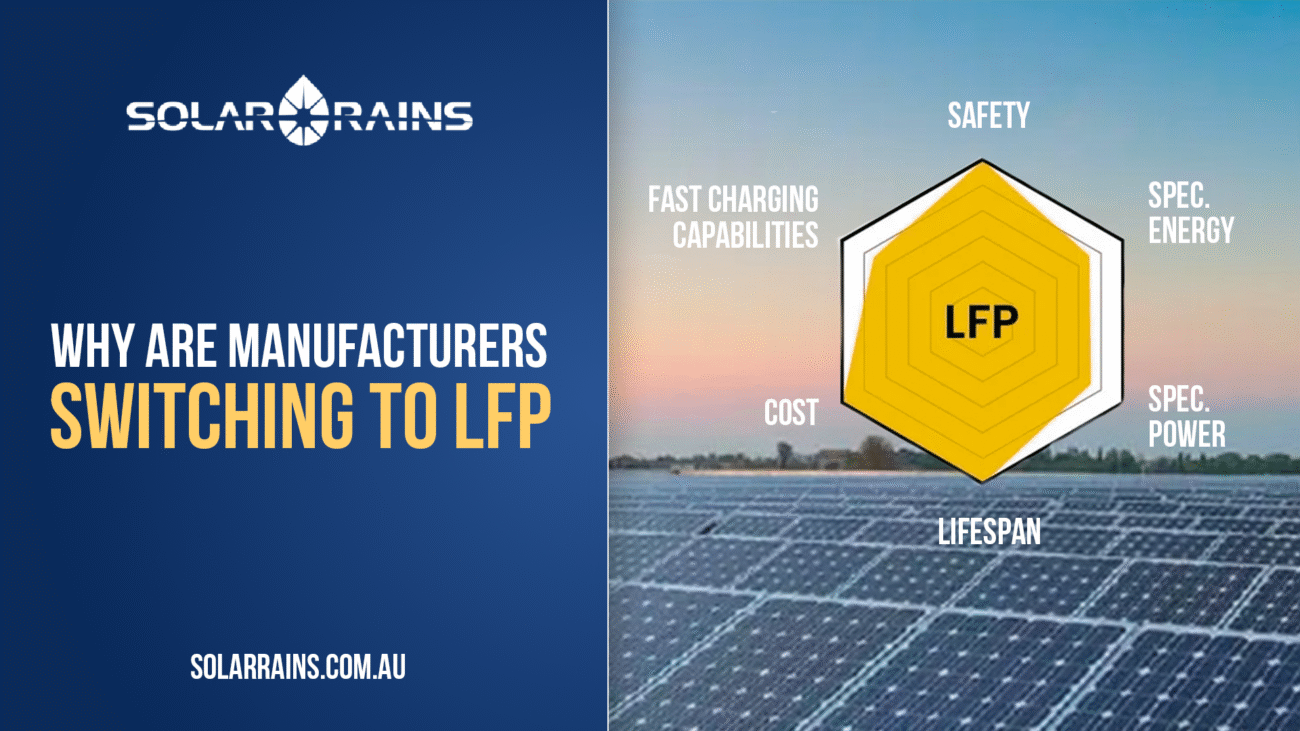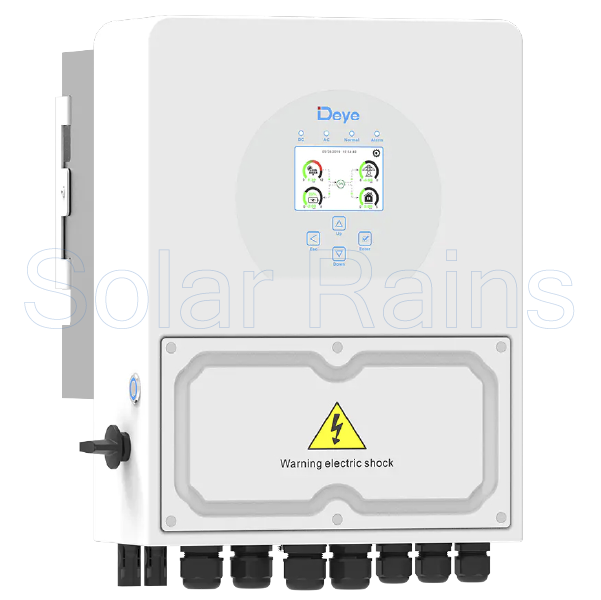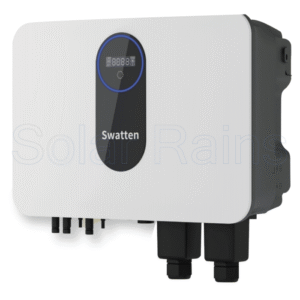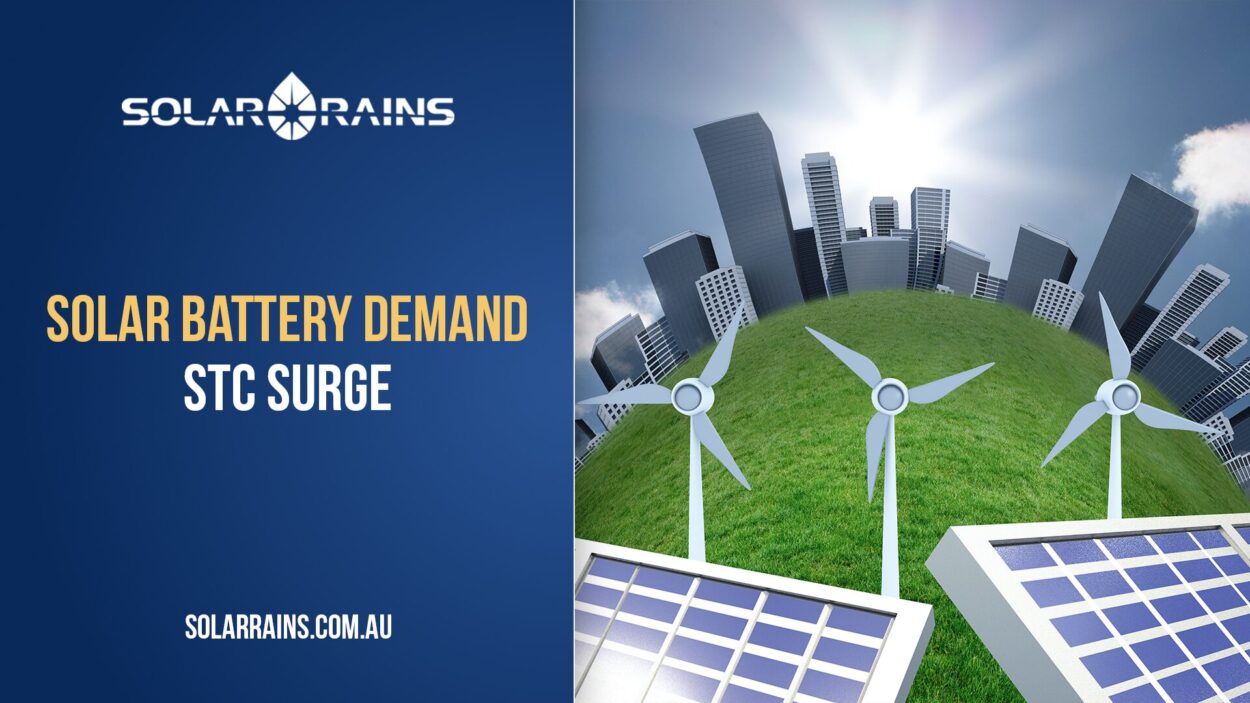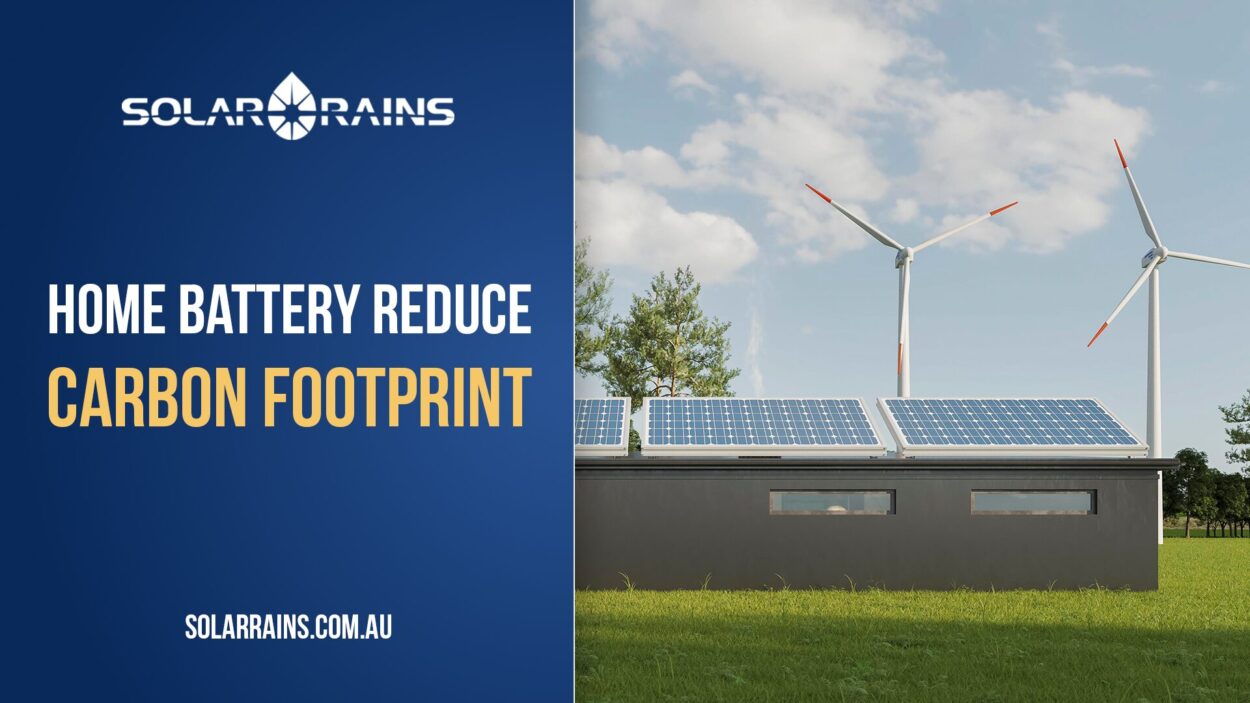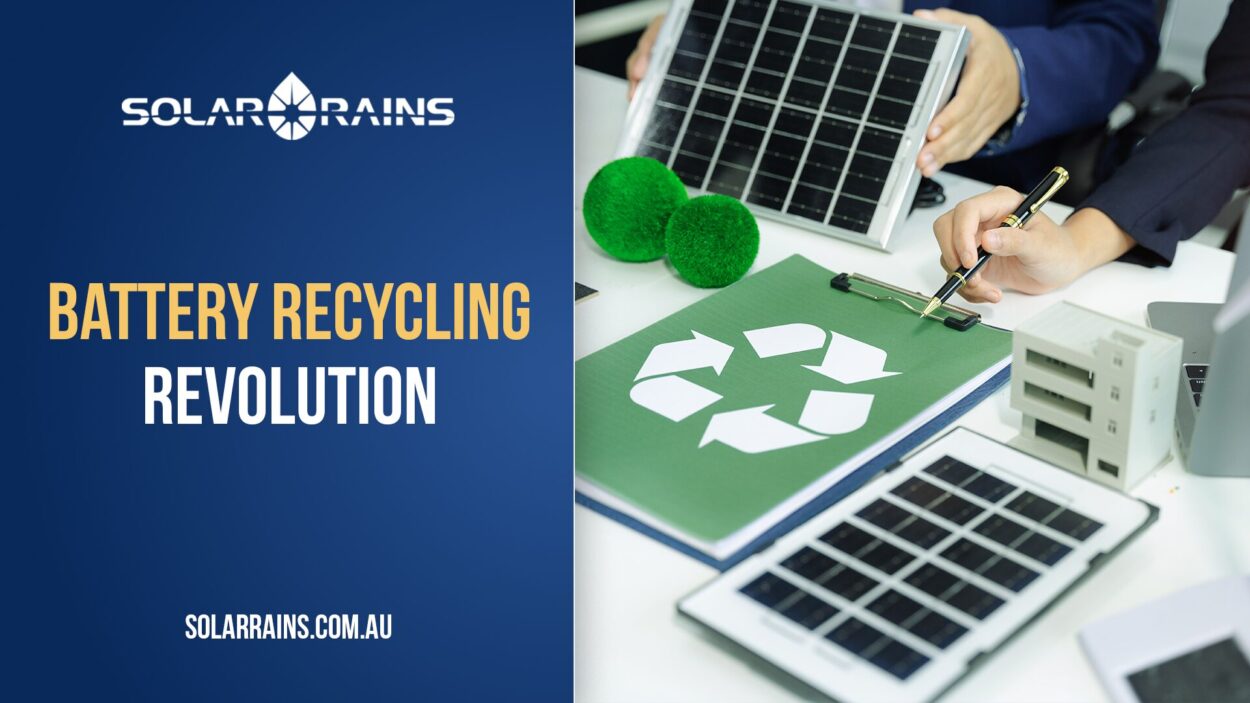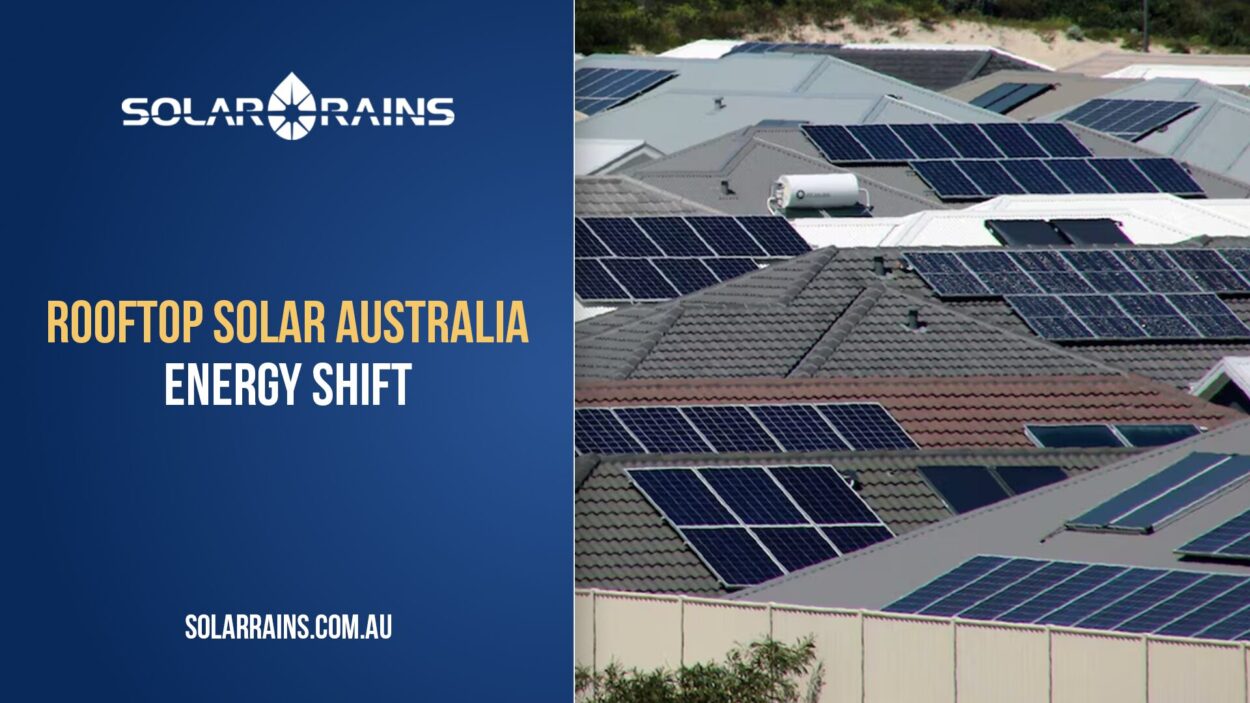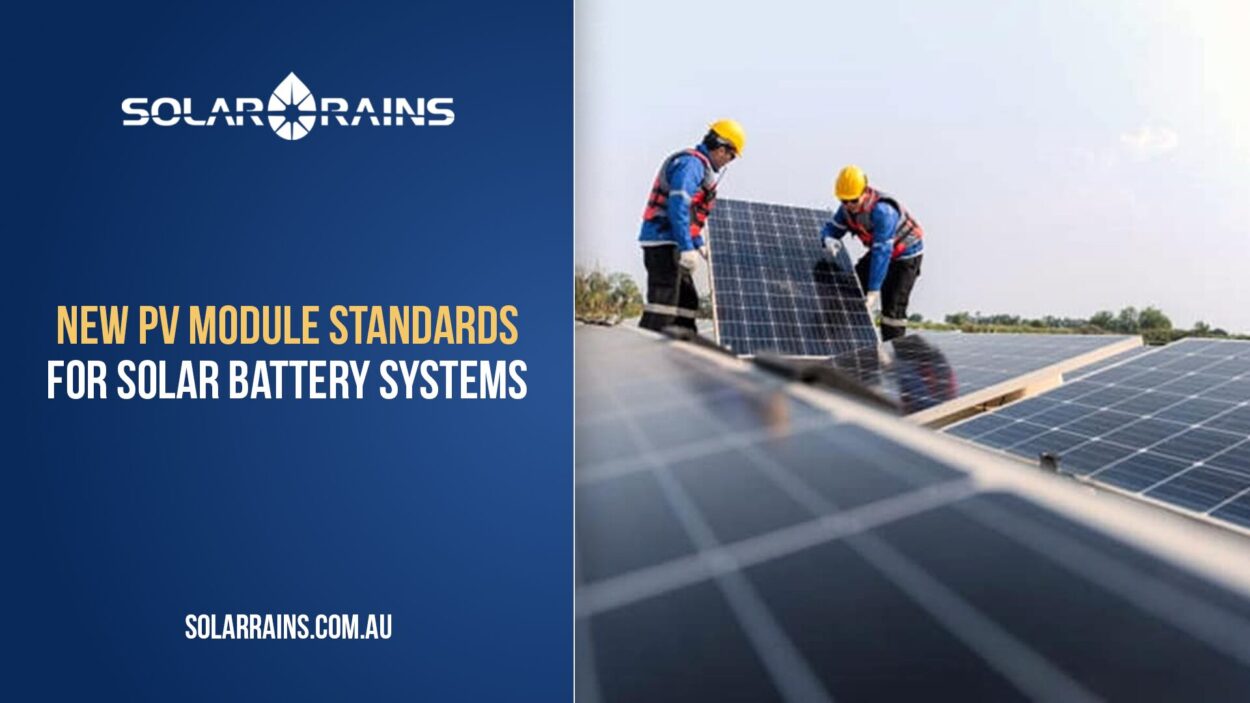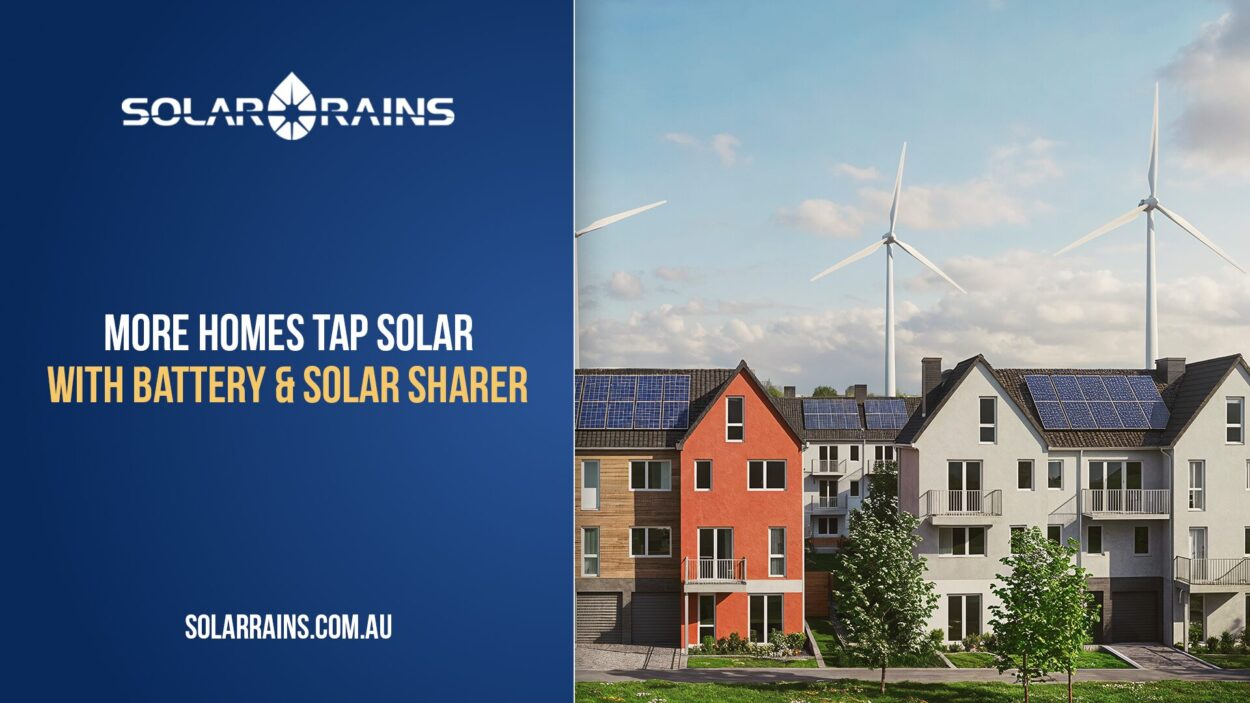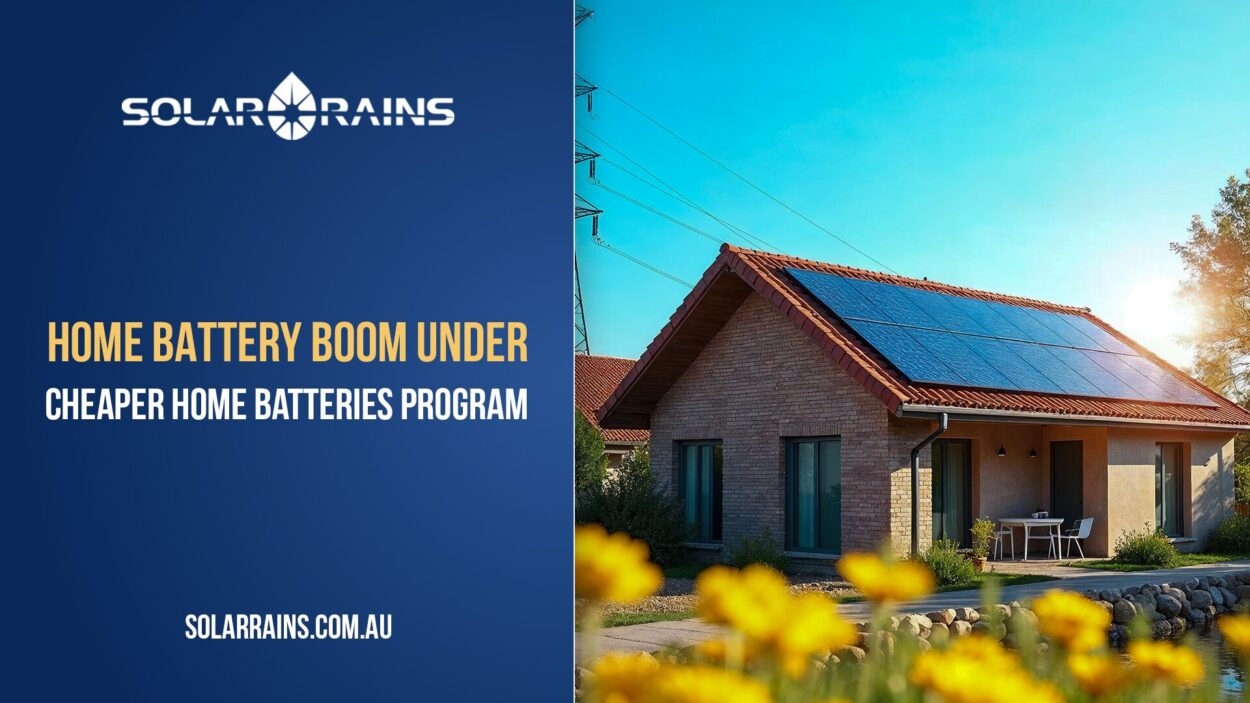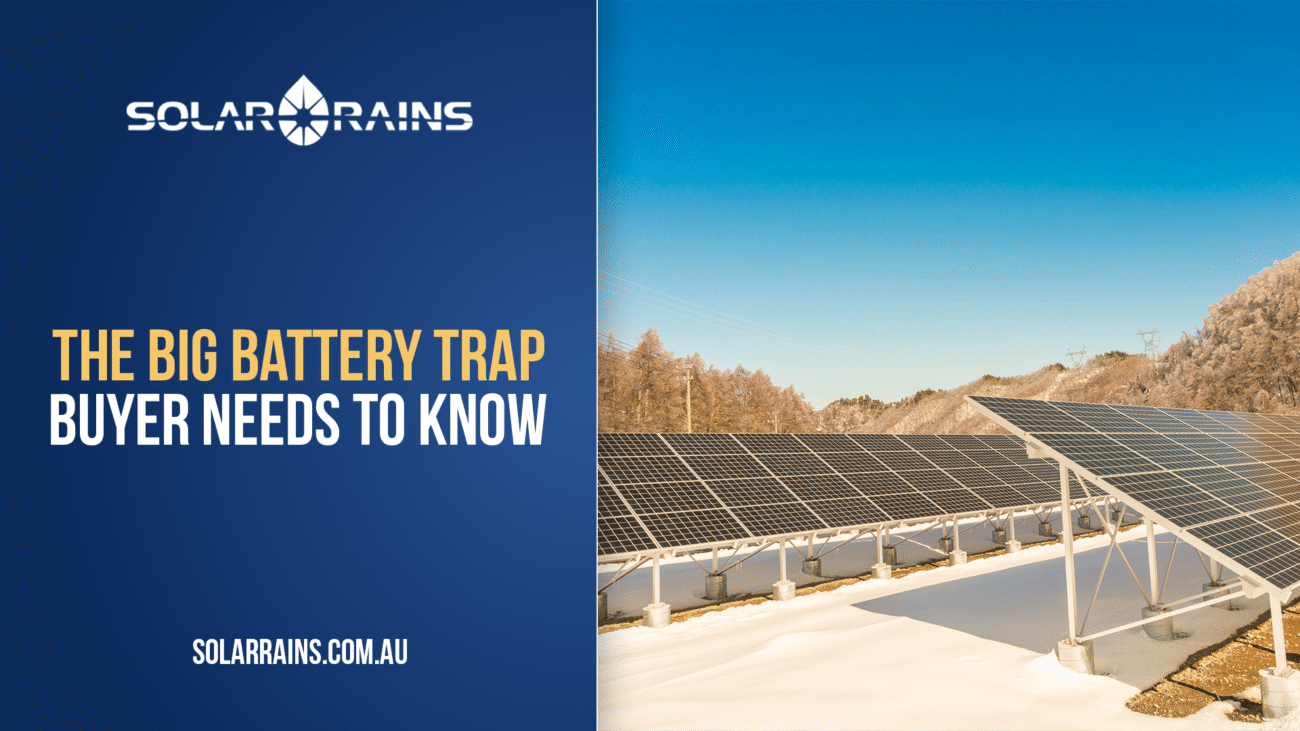Introduction
As the demand for clean, renewable energy grows across Australia, solar battery systems have become a cornerstone of both residential and commercial solar setups. Among the various types of batteries available on the market, Lithium Iron Phosphate (LFP) batteries are emerging as the top choice for energy storage due to their safety, long lifespan, and durability.
Manufacturers, solar product wholesale suppliers, and installers alike are moving toward LFP-based storage solutions for a good reason, it’s the safest, most reliable technology for solar battery storage today.
Let’s dive into why LFP is transforming the solar battery market and what this means for you, whether you’re a homeowner, business, or solar supplier.
What Is LFP?
LFP stands for Lithium Iron Phosphate, a specific type of lithium-ion chemistry used in batteries. LFP batteries are commonly used in solar energy systems, electric vehicles, and backup storage systems because they provide a safe, long-lasting, and thermally stable solution.
Unlike Nickel Manganese Cobalt (NMC) batteries, which are more common in EVs, LFP batteries don’t rely on cobalt or nickel, making them more environmentally friendly and less expensive to produce.
The chemistry also contributes to the battery’s ability to withstand high temperatures and maintain structural integrity under stress, making it an ideal option for solar products installed in harsh Australian climates.
How Do LFP Batteries Work?
LFP batteries store and discharge electricity using the LiFePO4 compound. When solar panels generate power, the energy is stored in the battery for later use. The LFP battery then discharges power when needed, typically at night or during peak demand.
Key technical traits include:
- Steady Voltage: LFP batteries provide a flat voltage curve during discharge, maintaining system stability.
- Slow Degradation: These batteries suffer less from aging and can sustain thousands of cycles (up to 6,000+).
- Integrated Battery Management Systems (BMS): Modern LFP systems include BMS that optimize charging and prevent overheating or overcharging.
This seamless compatibility makes LFP batteries a top-tier choice for hybrid battery and solar battery systems in Australia.
Key Features of LFP Solar Battery
Here’s why solar suppliers are making the switch to LFP:
- Safety First: LFP is non-combustible, and it doesn’t overheat like other lithium-ion chemistries. This makes it perfect for rooftop systems near residential spaces.
- Longevity: Most LFP batteries last 10–15 years or more, even under heavy use.
- Low Maintenance: No regular equalization or deep cycling required.
- High Efficiency: Charge and discharge efficiencies typically range between 95–98%.
Eco-Friendliness: LFP is cobalt-free, reducing ethical and environmental concerns linked to mining practices.
Advantages vs. Disadvantages
| Advantages | Disadvantages |
| Extremely safe and stable chemistry | Lower energy density than NMC |
| Longer lifespan compared to most other chemistries | Larger physical size required per kWh |
| Performs well in hot climates like Australia | Higher upfront cost (though prices are falling) |
| High cycle count with minimal capacity loss | Slightly heavier systems |
| Environmentally friendlier due to no cobalt or nickel | Not ideal for very compact mobile applications |
Applications & Market Trends
LFP solar batteries are widely used across:
- Residential solar systems for self-consumption & backup.
- Commercial solar systems to reduce grid reliance & peak demand charges.
- Off-grid solar systems for farms, remote areas & microgrids.
In Australia, where sun exposure is high and blackout risks are rising, LFP-based solar battery systems are increasingly becoming a mainstream choice.
Solar Rains, a trusted solar supplier in Australia, supports this shift by offering battery storage solutions powered by LFP technology from brands like Deye, Dyness, and AlphaESS.
Why Are Manufacturers Switching to LFP?
Several key reasons are driving the shift:
- Fire Safety Concerns: NMC batteries have a higher risk of thermal runaway. In contrast, LFP cells resist combustion, even when punctured or overcharged.
- Material Costs: LFP uses abundant materials, reducing production costs long-term.
- Regulatory Pressure: As solar energy becomes more regulated, safety and sustainability are now essential for solar products.
- Supply Chain Stability: LFP relies on iron and phosphate—materials with less global volatility than cobalt or nickel.
Major battery manufacturers like CATL, BYD, and Tesla (in certain models) have shifted toward or added LFP to their product lineup, reinforcing LFP’s dominance in the solar storage sector.
Who Should Choose LFP Solar Batteries?
Homeowners
Looking for long-term savings and low-maintenance backup? LFP solar batteries offer a hassle-free solution that pairs perfectly with rooftop solar systems.
Businesses
For small and medium enterprises, LFP batteries help manage electricity bills, support sustainability goals, and provide backup during grid outages.
Installers & Solar Product Wholesale Partners
LFP ensures you deliver safe, high-performance systems with fewer warranty issues—making it a preferred option for solar power suppliers and system integrators.
FAQs
Yes. While NMC offers higher energy density, LFP provides better thermal stability, a longer lifespan, and is generally safer, making it a better fit for solar storage.
Minimal. Thanks to BMS and chemical stability, LFP batteries require very little maintenance beyond basic installation checks.
Most modern hybrid inverters, including Deye & AlphaESS, are compatible with LFP batteries. Always check with your installer or solar supplier.
Initially, yes. However, with a longer lifespan and better efficiency, the total cost of ownership is often lower than other chemistries.
Absolutely. Their temperature tolerance and high cycle stability make them ideal for the hot, dry, or coastal conditions in Australia.
Conclusion
If you’re investing in solar energy for your home or business, choosing the right battery storage technology is essential. LFP batteries stand out as the most safe, durable, and future-ready option available today.
As the Australian market matures and energy independence becomes a greater priority, solar battery systems built on LFP chemistry are poised to become the default choice.
Ready to upgrade your system? Check out Solar Rains’ LFP-compatible storage systems & hybrid inverters at solarrains.com.au.

